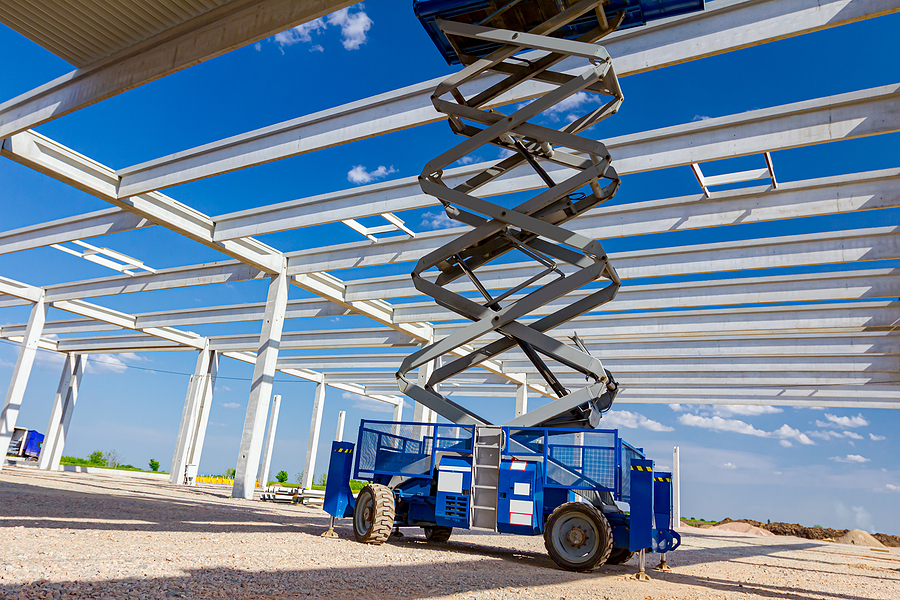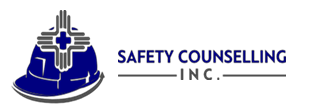The Nuts and Bolts of Scissor Lifts and Scissor Lift Safety Rules

Scissor lifts offer a secure and stable environment to carry out work thanks to their comprehensive platforms, which are large enough to accommodate people and the equipment they need to do their jobs. To put it simply, scissor lifts are highly potent pieces of machinery. It should be no surprise that they are widely used in manufacturing environments and construction sites. Even though scissor lifts have several inherent dangers, seasoned employees are familiar with the precautions and protocols that must be followed to prevent mishaps and injuries.
Regarding the safety of scissor lifts, just a little training may go a long way.
Employers must give personnel comprehensive scissor lift training to avoid costly OSHA penalties and lessen the likelihood of a workplace accident. Learning the essentials, such as what a scissor lift is and how it works, is just as important as being aware of safety precautions for using a scissor lift, which can help keep workers safe.
What exactly is a scissor lift, though?
You might be wondering what precisely a scissor lift is. It’s a motorized vehicle with a platform that can be lifted vertically to a more horizontal position. The charge is easily identifiable by its peculiar look, thanks to the presence of crisscrossing metal supports and a platform positioned on folding arms.
There is a range of sizes available for scissor lifts, which may be driven by gasoline or electricity. In addition, scissor lifts are frequently utilized in warehouses and other industrial places when there is a shortage of accessible space.
In addition, compared to conventional scaffolding, scissor lifts provide a greater degree of movement. According to OSHA regulations, scissor lifts are officially classified as a sort of scaffolding and not as an aerial work platform (AWP) or a standard aerial lift.
Warnings Regarding the Use of Scissor Lifts
When operating scissor lifts, employees have access to various tactics and pointers that can help them maintain their safety. Before employees can use these tools, their employers must provide them with the appropriate training and certification. Training on OSHA scissor lifts should be completed first because it is a legal requirement.
Before an employee uses a scissor lift, the employer is responsible for assessing the work environment to identify any potential dangers that might result in an accident. It is of the utmost importance to check that the apparatus does not include any elements that are either loose, damaged, or broken and that the area around the device is risk-free. A ground-level risk assessment conducted in a brisk five minutes might be all that is necessary to avert an accident or something even worse.
In addition to conducting inspections of the apparatus, the following are some more techniques that may be utilized to reduce the risk of accidents using scissor lifts:
Protection against falls
Falls are one of the leading causes of accidents with large pieces of equipment. Safety guidelines about aerial lifts and scissor lifts must be considered to prevent employees from falling and becoming wounded or killed due to their falls. Specifically, protection is the foundation of the safe operation of a scissor lift.
- Guardrails must be operational on scissor lifts to prevent operators from slipping off the platform.
- When guardrails are present, scissor lift employees are not obliged to wear body harnesses and lanyards. However, specific corporate safety procedures may require scissor lift operators to wear safety harnesses.
- Workers may only stand on the platform, not the guardrails.
- Employees should maintain the work area near the list to avoid leaning away from the scissor lift.
- Workers must never operate an elevator by themselves.
Stabilization
It’s not enough to know what a scissor lift is to stay safe on the job. Scissor lifts must be sturdy for workers to use them. Because of this, they may be able to prevent tipping or collapsing. With scissor lifts, stability is an essential aspect of construction site safety. Following these safety measures for a stable charge is one of the best methods to prevent most scissor lift incidents.
- Moving on a scissor lift should be done following the manufacturer’s guidelines.
- The scissor lift should not be near vehicles or other equipment that might potentially come into contact with the charge.
- Ensure the scissor lift is placed on a level surface, away from drop-offs and other obstacles.
- The best time to operate a scissor lift is when the weather is clear, and there are no wind gusts.
- Weight and height limitations should never be exceeded.
Positioning
An OSHA training program for scissor lift operators may assist workers in understanding the necessity of appropriate placement and how to prevent crushing or electrocution mishaps. When a moving scissor lift is close to a fixed item, a moving scissor lift is near moving vehicles, or a moving scissor lift goes beneath a fixed object, there is a risk of crushing. Even if neither the charge nor the person comes into touch with the live line, employees on the platform who are near electricity wires run the risk of electrocution. Several of the most prevalent OSHA safety infractions each year directly connect to the dangers of scissor lift placement. To avoid electrocutions and crush-by incidents, scissor lift operators should follow these safety recommendations:
- Avoid electrocution by positioning the scissor lift at least 10 feet away from electrical lines.
- Employ traffic control methods to keep the scissor lift away from other employees or cars. The strategic positioning of traffic cones helps divert foot traffic away from potentially hazardous locations surrounding a functioning scissor lift.
- Utilize ground guides in the work zone surrounding the scissor lift.
- Make sure there are no electrical cables or other permanent items above you.
Maintaining Scissor Lifts
Workers must not only grasp a scissor lift but also learn how to properly maintain these devices. Only via routine maintenance may scissor lifts continue to be used in a risk-free manner. Employees need to familiarize themselves with the manufacturer’s instructions to:
Scissor Lift Safety Tips
- Conduct pre-inspection and environment inspections.
- Perform equipment maintenance and verify that safety measures are not circumvented.
- Ensure that guardrails are in excellent shape.
- Confirm that the emergency stop button is operational.
- Examine the brakes to guarantee that the scissor lift may be stopped safely at any moment.
Training for Operators
OSHA requires scissor lift training for all companies that employ scissor lift operators. This training teaches workers how to use scissor lifts safely and comply with all applicable safety requirements. The following scissor lift safety guidelines and instructions should be included in every training program:
- Instructions on safely operating a scissor lift in the elevated position and while travelling per the manufacturer’s specifications. [PDF]
- The proper way to use a scissor lift and its weight restrictions
- Looking for and avoiding dangers on the Jobsite
- How do you go about reporting any issues that need to be fixed?
To be safe when using a scissor lift, it is essential to follow safety precautions such as examining the equipment and the surrounding environment. Individual workers are responsible for their safety checks even if the work area has been judged safe. Training for scissor lifts also educates personnel on thoroughly inspecting the surrounding environment to look for any red flags.
Common Scissor Lift Safety Hazards
According to the employer and lift operator, scissor lift safety varies widely regarding how much protection is provided. If a company gives its employees OSHA-compliant scissor lift training, it can improve workplace safety. It is possible, however, to put yourself and others at risk if the operator of a scissor lift is inexperienced or disregards safety standards.
According to the Bureau of Labor Statistics, Scissor lifts are responsible for an average of eight occupational deaths each year. Those who work with scissor lifts, as well as rental and training firms, are warned by the Health and Safety Executive (HSE). A notice from the Health and Safety Executive (HSE) emphasizes the need for routine maintenance, inspection, and testing of safety equipment.
Common scissor lift safety risks include:
Poor Maintenance
Problems with the performance of a scissor lift can develop if it is not maintained correctly, which can put the lift operators and spectators in harm’s way.
Improper Positioning
When operating a scissor lift near electricity lines, the operator is in danger of being electrocuted. In addition, an operator can be crushed if a scissor lift is positioned too close to a support beam, door frame, or similar immovable item.
Insufficient Training
Accidents and injuries caused by scissor lifts can happen to the lift operator and other people in the vicinity if the operator does not know how to use the charge safely.
The Major Causes of Scissor Lift Accidents
When workers disregard the scissor lift safety rules, there is a greater likelihood that accidents and injuries may occur. Training and understanding the safety standards for using a scissor lift are essential. According to the Hazard Alert scissor lift notice published by OSHA, accidents with scissor lifts can be caused by a variety of circumstances, including the following:
- Stability concerns
- Overhead hazards
- Bad weather
- Improperly working safety devices
- No fall protection harness
The safety regulations established by OSHA for scissor lifts assist in eliminating the most common causes of accidents.
